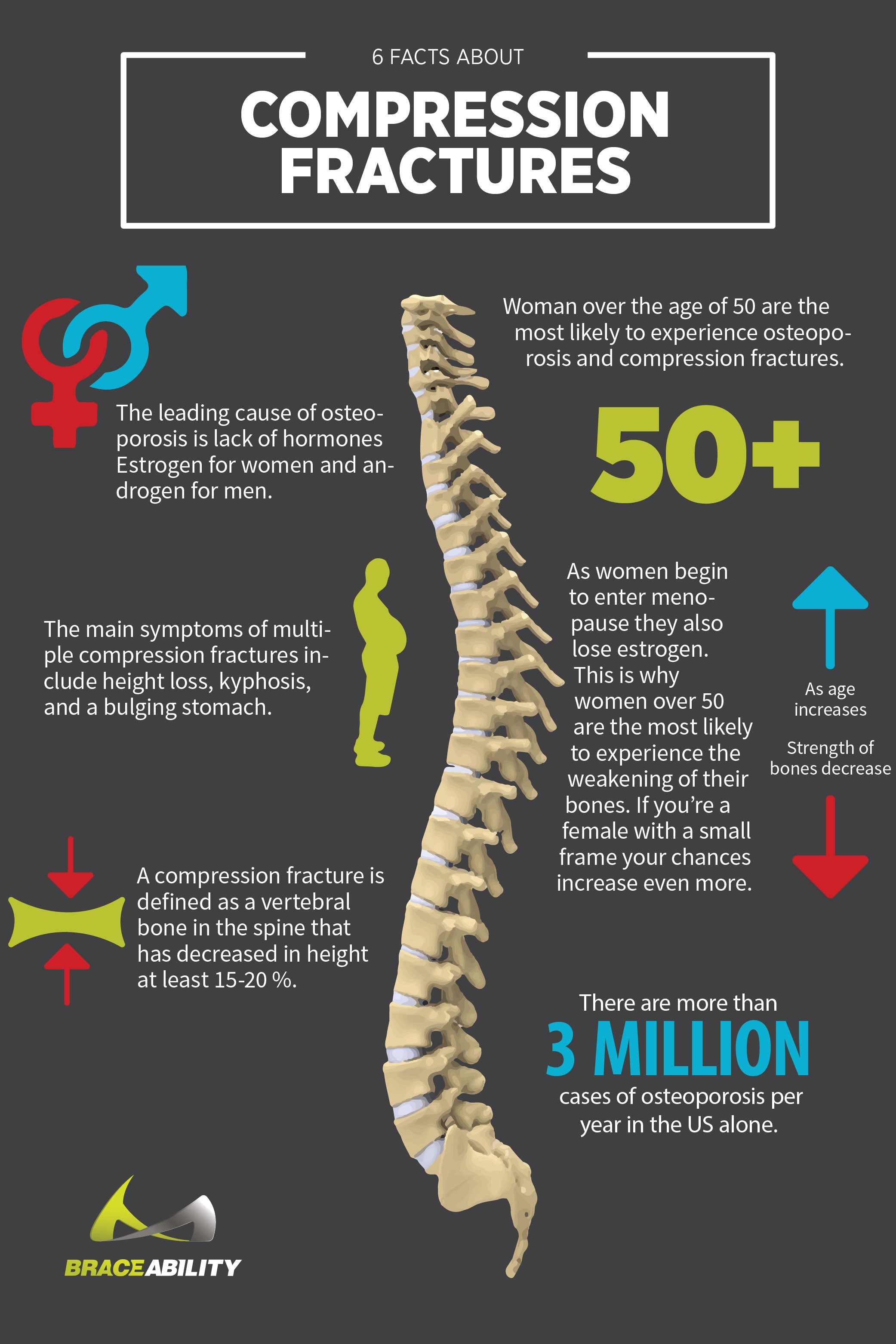What is a Compression Fracture?
A compression fracture of the back or spine happens when your vertebrae, or bones of the spine, break. Compression fractures can occur anywhere in the spine but most commonly in the T9 through L1.
Compression fractures come in a variety of different shapes, sizes, and names. They are most commonly called burst fractures, crush fractures or wedge fractures. Each of these different fractures implies different things and may have different long-term effects. Knowing which type of fracture you have is important because of the long-term effects of the different breakages. For example, a burst fracture has the potential for much more severe long-term effects including neurological compromise.
Wedge Fracture: The vertebrae was fractured at the front of the bone in the front of the spine.
Crush Fracture: The entire bone breaks, rather than just the front of the vertebrae.
Burst Fracture: Occurs when there is a height loss in both the front and the back of the vertebra.
Do I have the Symptoms of a Vertebral Compression Fracture?
Symptoms of a vertebral compression fracture vary greatly, making it hard to identify. Some people experience fairly acute back pain that overtime becomes chronic, while others have sudden severe back pain.
-
Acute back pain that turns chronic overtime
-
Noticeable hunchback deformity called kyphosis. Read more on kyphosis. This is most common if you have a wedge fracture on your vertebrae.
-
Loss of height
-
Crowding of internal organs
-
Loss of muscle and aerobic conditioning due to lack of activity and exercise
-
Pain that worsens when you walk or stand
-
Difficulty bending or twisting
-
Pain is noticed most often when performing daily tasks that slightly strain back muscles. For example, putting sheets on the bed, or unloading groceries.

What are Treatment Options for Spine Compression Fracture?
Treatment for spine compression fracture can often be conservative. Treatment usually involves a mixture of reducing your activity, medication, and brace wearing. The reduction in activity will help to heal your fractured vertebrae while the medication takes care of pain.
At BraceAbility we offer a variety of different braces that are recommended for osteoporosis or compression fractures of the vertebra. Below are a few of the different brace options that are available.
This TLSO brace is a great option for dealing with compression fractures. This brace has a three-point pressure system that reduces problems associated with compression fractures. The brace applies pressure to the sternum, mid back (where most spinal compression fractures happen), and the front of the hips. The brace was made with user comfort in mind.
This brace made for osteoporosis holds the mid-spine in a properly extended position, preventing unwanted flexion of the spine due to conditions like osteoporosis. This brace is good for intense osteoporosis as its main intention is to create proper spinal alignment.
If you are experiencing a more mild form of osteoporosis or a compression fracture any type of back support located in the thoracic and lumbar are will help lead you toward recovery. This back brace for mid to lower back pain is a great option for less severe cases.
If your compression fracture is located in your L1 or lower try this comprehensive spine stabilization brace. This brace helps to limit damaging motion in the region in order to treat many lower to mid back conditions.












